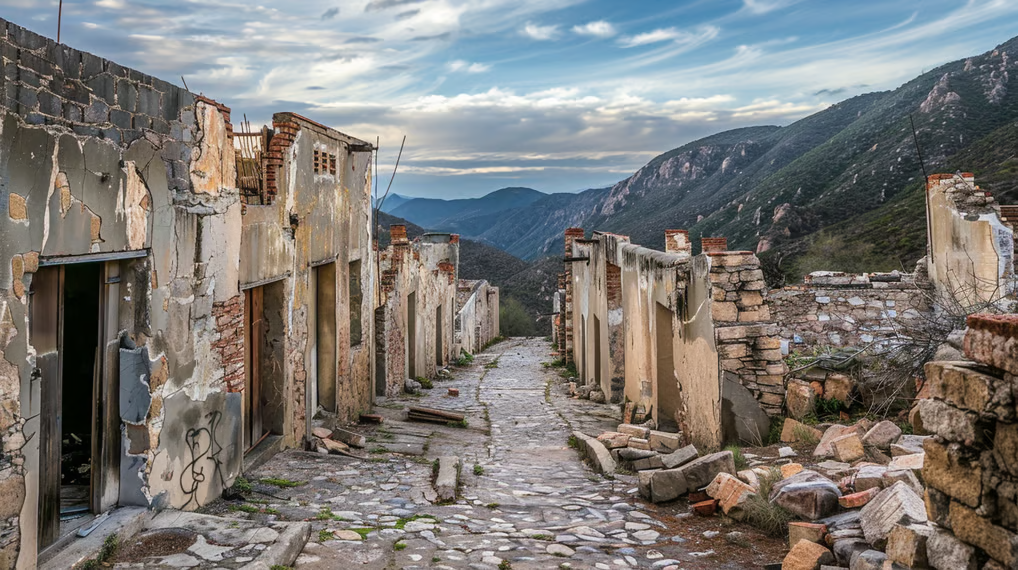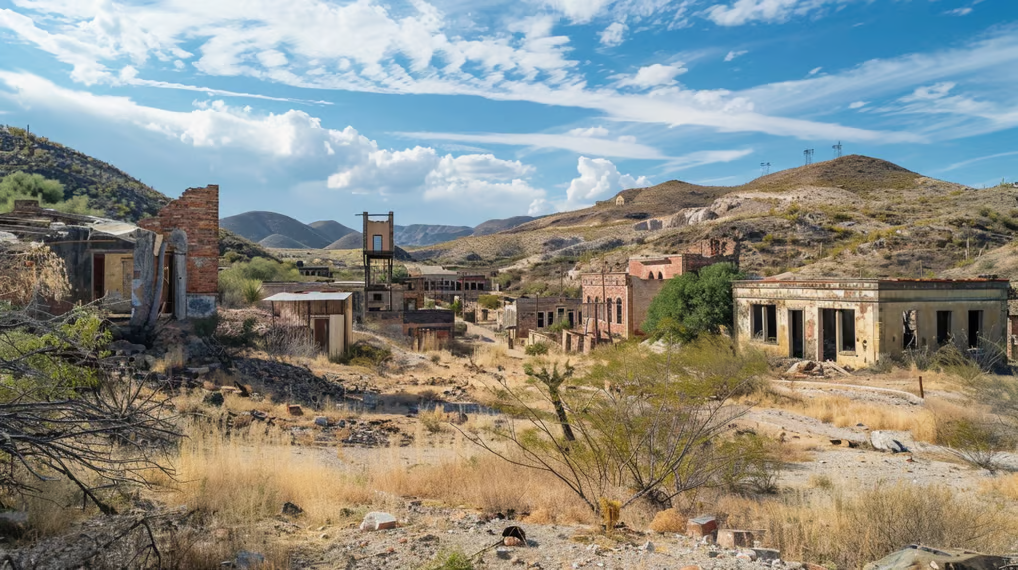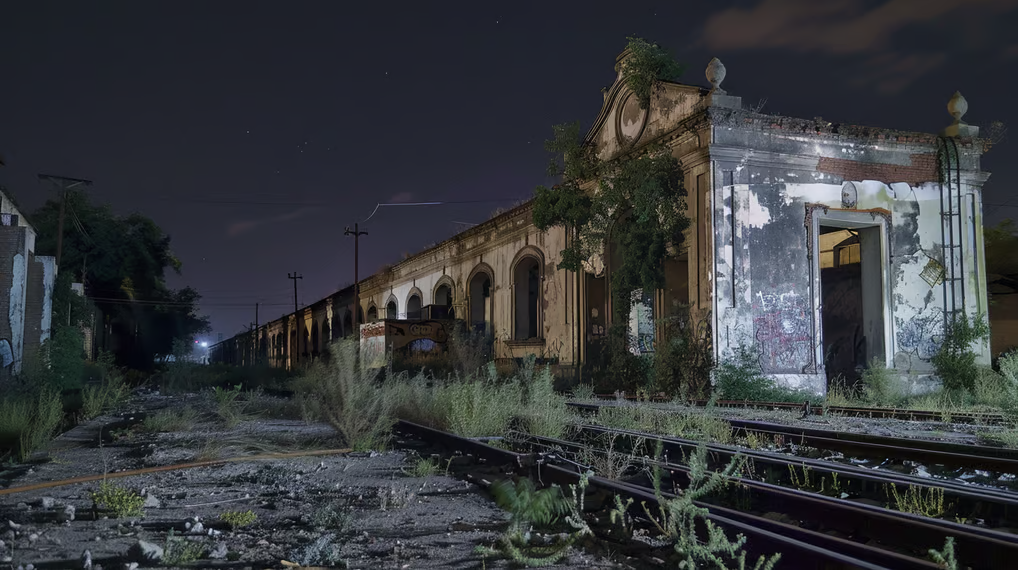Ghost Towns and Legends: Unearthing Mexico's Mysterious Past
Journey into the heart of Mexico's mysterious past by exploring its ghost towns, where abandoned settlements whisper legends of yesteryear, offering a haunting yet fascinating glimpse into a forgotten world.

Mexico's ghost towns are some of the country's most intriguing and mysterious destinations. These abandoned settlements, once bustling with life, now stand as silent testaments to a bygone era. The allure of exploring these ghost towns lies in the mix of historical significance, eerie beauty, and the legends that surround them. From Real de Catorce to Ojuela, each ghost town has its own story to tell.
The Intriguing History of Mexico's Ghost Towns
There's something undeniably captivating about exploring the remnants of a forgotten town. The mere thought of walking through streets that were once filled with the hustle and bustle of daily life is enough to send shivers down your spine. Mexico's ghost towns offer a unique opportunity to step back in time and uncover the secrets that lie within their crumbling walls.
The Definition of a Ghost Town
A ghost town is defined as an abandoned settlement that was once inhabited but has since been deserted. These towns often flourished during periods of economic prosperity, only to be left behind when industries collapsed or natural disasters struck. Today, they stand as haunting reminders of a different era.
Why Do People Get Fascinated with Abandoned Places
Humans have always been drawn to abandoned places. There's a sense of mystery and intrigue in exploring what was once vibrant and is now abandoned and forgotten. In the case of ghost towns, there's also a chance to explore the past, to understand the history of a place through its remnants.
As you wander through the streets of Mexico's ghost towns, you can't help but wonder about the lives that were lived here. What stories do these dilapidated buildings hold? Who were the people who once called this place home? It's like being a detective, piecing together clues from the past to create a vivid picture of what life was like in these forgotten towns.
One of the most intriguing aspects of Mexico's ghost towns is the way nature has reclaimed the land. As buildings crumble and decay, plants and trees take root, intertwining with the remnants of human civilization. It's a beautiful and eerie sight, witnessing the delicate balance between nature and man-made structures.
Each ghost town in Mexico has its own unique story to tell. Some were once thriving mining communities, where miners toiled deep underground in search of precious metals. Others were agricultural towns, where fields of crops stretched as far as the eye could see. Exploring these towns allows you to delve into the history of Mexico, to understand the struggles and triumphs of the people who built these communities from the ground up.

The Most Famous Ghost Towns in Mexico
Mexico is home to several iconic ghost towns, each with its own unique character and allure. Real de Catorce, a spiritual retreat nestled among the mountains, is a must-visit for those seeking solitude and tranquility. Ojuela, on the other hand, offers a glimpse into the country's mining history, with its well-preserved structures frozen in time.
Real de Catorce: A Spiritual Retreat
Located in the high desert of San Luis Potosi, Real de Catorce is a town that seems to have been forgotten by time. Its narrow cobblestone streets, colonial architecture, and impressive church draw visitors from around the world. Many come seeking healing or spiritual guidance, as the town is believed to be an entrance to another realm. As you wander through the streets of Real de Catorce, you can't help but feel a sense of serenity enveloping you. The crisp mountain air, the silence broken only by the distant sound of church bells, and the breathtaking views of the surrounding landscape all contribute to the town's ethereal atmosphere. It's no wonder that artists, writers, and spiritual seekers have been drawn to this place for centuries. Real de Catorce is also known for its rich cultural heritage. The town's indigenous Huichol community adds a vibrant touch to the tapestry of its history. Their intricate beadwork, colorful textiles, and spiritual rituals are a testament to their deep connection with the land. Visitors have the opportunity to learn about their traditions and even participate in sacred ceremonies, further immersing themselves in the spiritual essence of Real de Catorce.
Ojuela: The Mining Town Frozen in Time
Once a thriving silver mining town, Ojuela is now a ghost town frozen in time. Its towering suspension bridge and dilapidated buildings offer a glimpse into Mexico's rich mining history. Exploring the abandoned mine shafts and crumbling structures is a thrilling experience that transports visitors back to a different era. As you step onto the suspension bridge that spans the deep canyon, you can't help but marvel at the engineering marvel that it is. The bridge, built in the late 19th century, was a lifeline for the mining community, connecting the town to the mines and allowing for the transportation of precious minerals. Today, it stands as a testament to the resilience and ingenuity of the people who once called Ojuela home. Walking through the streets of Ojuela, you'll encounter remnants of the town's past. The crumbling facades of once-grand buildings whisper tales of a bygone era. You can almost hear the echoes of pickaxes hitting rock and the rumble of ore-filled carts rolling through the streets. It's a haunting reminder of the town's former glory and the lives that were shaped by the pursuit of silver.For those with a taste for adventure, exploring the abandoned mine shafts is an absolute must. Equipped with a helmet and a flashlight, you can descend into the depths of the earth, following the footsteps of the miners who toiled in darkness. The air grows colder, the silence becomes palpable, and the flickering light casts eerie shadows on the walls. It's an experience that will send shivers down your spine and leave you with a newfound appreciation for the bravery and resilience of those who worked in the mines.
The Legends Behind the Ghost Towns
Not only are Mexico's ghost towns steeped in history, but they're also shrouded in legends and folklore. Mexican culture is rich with tales of ghostly apparitions, cursed treasures, and tragic love stories. These legends add an extra layer of intrigue to the already captivating ghost towns.
Folklore and Mythology in Mexican Culture
Mexico has a long tradition of storytelling, with folklore and mythology playing a significant role in the country's culture. The legends associated with ghost towns are often rooted in these ancient tales, blending history and mythology into a captivating narrative that captures the imagination.
The Stories that Haunt the Ghost Towns
Each ghost town has its own unique stories and folklore that surround it. From tales of lost treasure to haunted buildings, these stories add an element of mystery and suspense to the already haunting atmosphere. Exploring these ghost towns becomes an adventure not only in history but also in the supernatural.

The Historical Significance of Ghost Towns
Ghost towns serve as fascinating windows into Mexico's past, offering valuable insights into the country's history and societal development. They provide a tangible connection to a bygone era, helping us understand the factors that shaped Mexico into what it is today.
The Role of Ghost Towns in Understanding Mexico's Past
Studying ghost towns allows us to gain a deeper understanding of Mexico's historical development. By examining the remnants of these abandoned settlements, archaeologists and historians can piece together the puzzle of the past. From economic patterns to social structures, ghost towns reveal valuable insights into the lives of those who once called them home.
Ghost Towns and the Evolution of Mexican Society
Ghost towns also shed light on the evolution of Mexican society as a whole. They highlight the shifts in economic systems, the impact of natural disasters, and the migration patterns that shaped different regions of the country. Exploring these ghost towns is not just a way to satisfy our curiosity; it's also a way to better understand Mexico's complex history.
The Modern Relevance of Ghost Towns
While ghost towns may be relics of the past, they still hold a certain modern-day relevance. They have become popular tourist destinations, attracting visitors from far and wide who are drawn to their haunting beauty and historical significance.
Dark Tourism in Mexico
Mexico's ghost towns have become increasingly popular tourist destinations in recent years. Travelers are drawn to the unique experience offered by these abandoned settlements. Hotels and rentals have sprung up in and around the ghost towns, allowing visitors to immerse themselves in the history and legends of these fascinating places.
The Preservation and Restoration of Ghost Towns
Preserving and restoring ghost towns has become an important endeavor for both local communities and the government. These efforts ensure that future generations can continue to explore and learn from the rich history of these abandoned places. By striking a balance between preservation and tourism, ghost towns can continue to captivate and educate visitors for years to come.
Are You Brave Enough To Visit These Mexican Ghost Towns?
Exploring Mexico's ghost towns is an adventure that takes you back in time, immersing you in the fascinating history, legends, and mysteries that surround these abandoned settlements. Whether you're drawn to the spiritual retreat of Real de Catorce, the mining history of Ojuela, or the stories that haunt the ghost towns, there's something for everyone. So why not embark on a journey to unearth Mexico's mysterious past? Discover the allure of ghost towns, immerse yourself in the legends, and witness the living history that lies within their crumbling walls. Start planning your adventure today and experience the magic of Mexico's ghost towns for yourself!